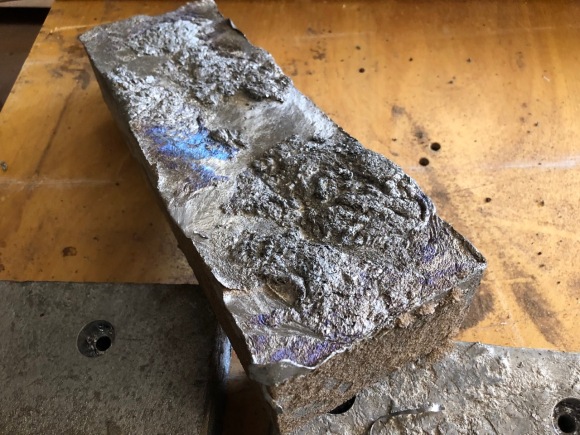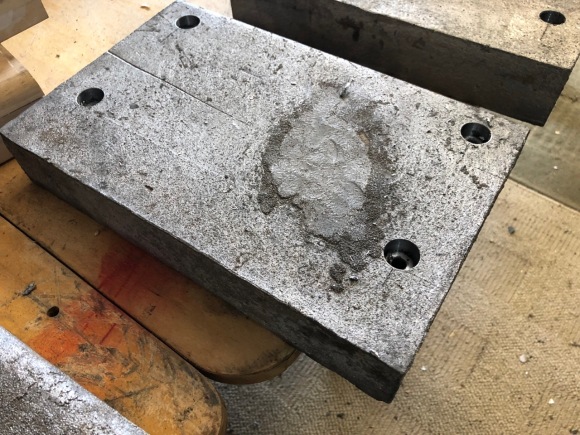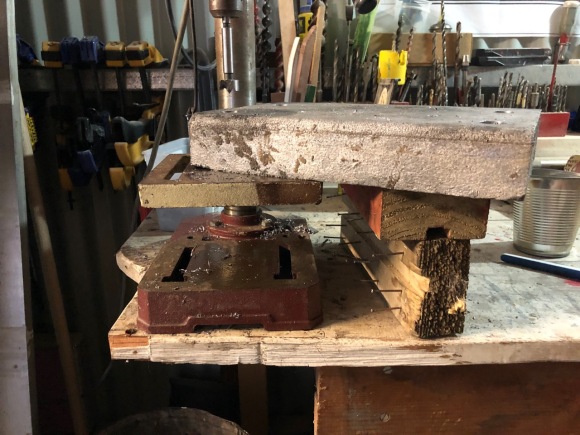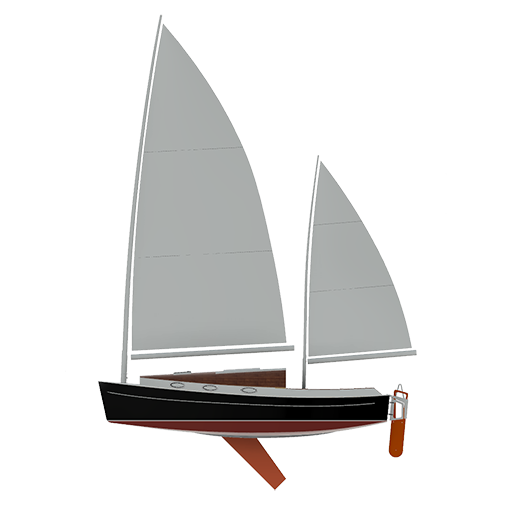Working the lead tiles I had cast at the foundry was a bit brutal, the 36kg blocks required a heavy hammer, solid benches, slow drills and a very deliberate workflow.
Each tile had issues with the shape, hollows and lumps and tags on the edges in some instances. I chose to hammer away at these issues, with the lead being soft enough I could bludgeon it into shape like a blacksmith would. It was quite rewarding, but really hard on the hands and wrist.


To fasten the lead to the outside of the hull, I am using 8mm silicon bronze coach bolts, one in each corner of each tile. The tiles will also be bedded in thickened epoxy, which will contribute to the fastening. Therefore, each tile needs to be drilled for bolting, the nuts will be recessed in the lead, and the domed head of the coach bolt will be on on the inside of the hull. To recess the nut I have to cut a shoulder in each hole.
With each tile’s corner marked out with a scribe, I used a drill press on a very slow speed to do the drilling. Lead is a fiend to drill, I am lucky these holes are 8mm, because a fine drill bit, heats and fails quickly. I began with the shoulder cut, initially I used a Forstner bit, but keeping it cool and sharp was impossible. I quickly switched to a spade bit, which made it very easy.
It is a job best done with feel and lots of kerosine. You need to carefully plunge in drilling and try and sense the lead getting to a melting point, then back off, add kero, let it cool, then plunge in again. Slow speed, with moderate pressure. When you get the elements working, you get rewarding progress. While I killed the forester quickly, the thin spade bit shed the heat quickly, and stayed sharp.

Following the shoulder hole, was the 8mm through hole. This was a trickier technique to perfect, I am so good at it now! This also took slow speed, an lots of kero, but the bit jammed up much easier, so gaining a feel for the lead melting was everything. If I used a lot of pressure I could almost match the drill press speed and create perfect unbroken curls of lead swarth. It was the closest I’ve felt to being a surgeon.
Here is a video on cleaning up the lead:
Here is a video on drilling the lead:
